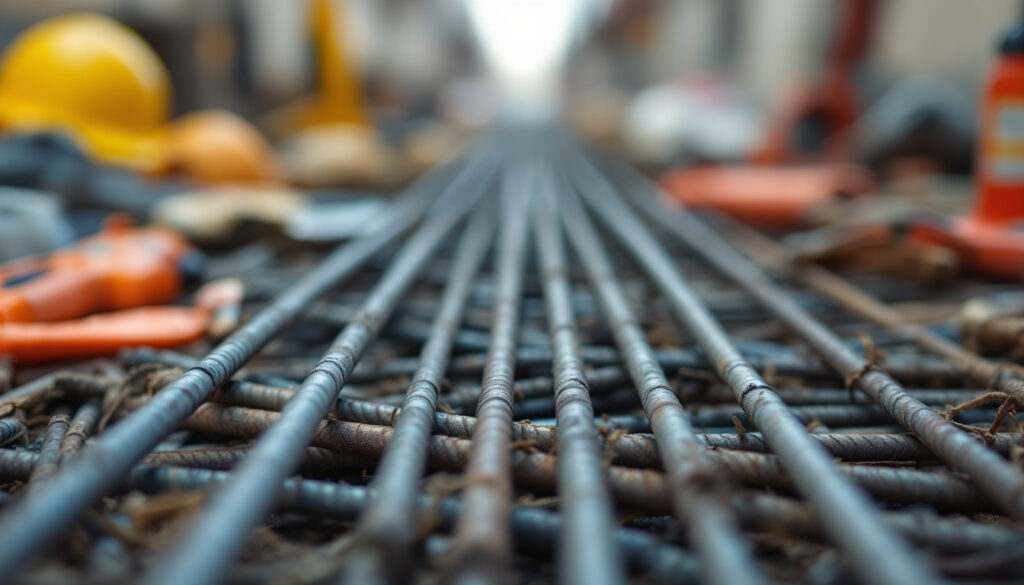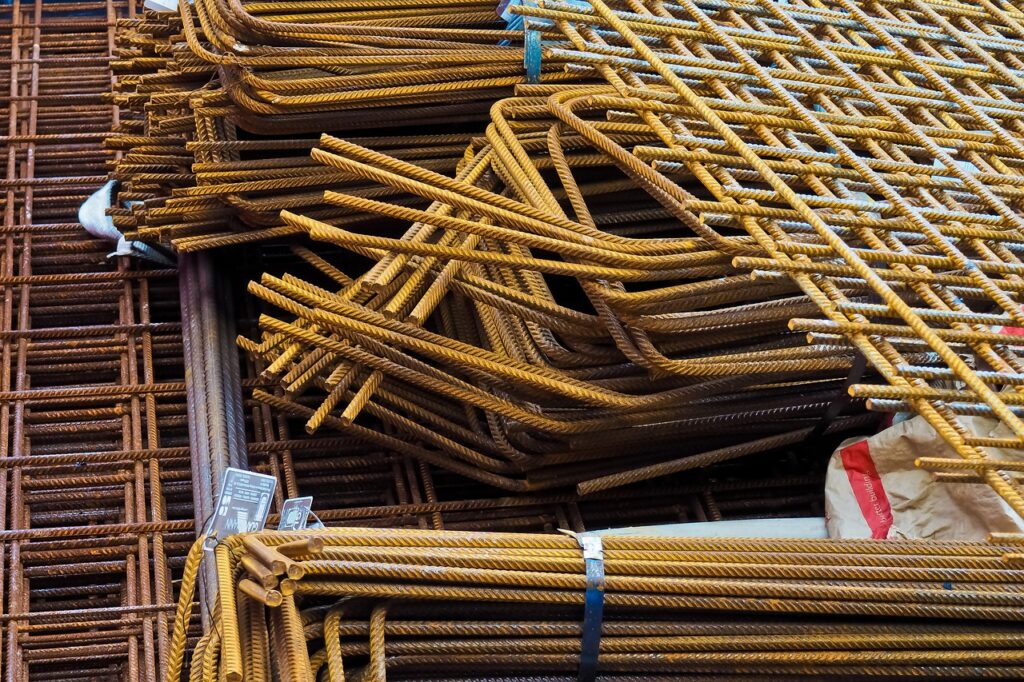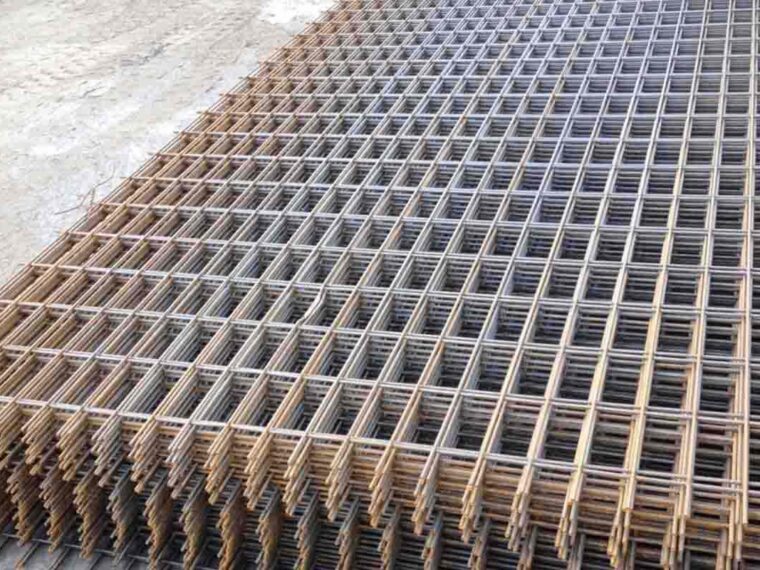Reinforced concrete is a fundamental part of modern construction, with reo bars acting as the crucial framework that gives strength and durability to structures. These steel reinforcement bars change regular concrete, which can only resist compression, into a strong building material that can handle various structural forces.
Choosing the right reo bars is extremely important for:
- Structural Integrity: Proper reinforcement stops cracking and ensures the ability to bear loads
- Building Longevity: High-quality reo bars increase the lifespan of concrete structures
- Safety Compliance: Meeting building regulations and safety standards
- Cost-Effectiveness: Making the best use of materials while still meeting structural needs
For both residential and commercial slabs, reo bars provide essential support that affects how well the structure performs under different conditions. The decision between various types of reinforcement bars has an effect on:

- Foundation stability
- Load distribution
- Crack resistance
- Durability against environmental factors
In Australia, the construction industry requires special attention when choosing reo bars, taking into account factors like:
- Local building regulations
- Environmental conditions
- Project requirements
- Budget limitations
Making smart choices about which reobars to use guarantees reliable structures while keeping construction costs in check. This careful thought becomes even more important as prices for building materials continue to rise in Australia’s construction industry.
Understanding Reo Bars for Concrete Reinforcement
Concrete structures face a significant challenge: while exceptionally strong under compression, they exhibit poor performance under tensile forces. Raw concrete can withstand only about 10% of its compressive strength when subjected to tension, making it prone to cracking and structural failure.
This inherent weakness necessitates the integration of reinforcement materials. Reinforcement bars (reo bars) work by:
- Absorbing tensile forces
- Preventing crack propagation
- Distributing loads evenly throughout the structure
- Enhancing structural ductility
The reinforcement mechanism operates through a collaborative relationship between concrete and reo bars. The concrete’s alkaline environment naturally protects the steel reinforcement from corrosion, while the steel provides the essential tensile strength.
Available Reinforcement Materials:
- Steel bars (most common)
- Glass Fibre Reinforced Polymer (GFRP)
- Basalt Fibre Reinforced Polymer (BFRP)
- Carbon Fibre Reinforced Polymer (CFRP)
- Stainless steel variants
Each reinforcement material offers distinct advantages based on specific project requirements. Steel remains the primary choice due to its:
- Cost-effectiveness
- Thermal expansion properties similar to concrete
- High tensile strength
- Proven track record in construction
- Wide availability in the Australian market
However, alternative materials such as GFRP and BFRP are gaining traction due to their unique properties. For instance, GFRP is known for its lightweight and resistance to corrosion, while BFRP offers excellent durability and high resistance to chemical attacks.
Learn more on: Top Mistakes to Avoid When Laying Reo bar in Concrete Footings
The selection of appropriate reinforcement materials directly impacts the structure’s durability, load-bearing capacity, and service life.

Types of Reo Bars
The construction market offers diverse reinforcement bar options, each designed for specific applications and environments:
1. Carbon Steel Rebar
- Standard choice for most construction projects
- High tensile strength and cost-effectiveness
- Requires protective measures in corrosive environments
2. Welded Wire Fabric
- Pre-fabricated mesh for uniform reinforcement
- Ideal for slabs, walls, and pavements
- Reduces installation time and labour costs
3. Epoxy-Coated Rebar
- Enhanced corrosion resistance
- Suitable for coastal structures
- Higher cost compared to standard carbon steel
4. Galvanised Rebar
- Zinc coating provides corrosion protection
- Moderate price point
- Effective in mild to moderate exposure conditions
5. Sheet-Metal Reinforcing Bars
- Lightweight alternative
- Used in non-structural applications
- Cost-effective for specific projects
6. European Rebar
- Meets BS EN standards
- High ductility characteristics
- Premium pricing structure
7. Stainless Steel Rebar
- Maximum corrosion resistance
- Ideal for marine environments
- Highest cost option
8. GFRP Rebar
Glass Fibre Reinforced Polymer composition
Completely corrosion-resistant
Lightweight but expensive
Perfect for special applications requiring non-magnetic properties
The selection of appropriate rebar type depends on project requirements, environmental conditions, and budget constraints. Each variant offers unique advantages in terms of durability, strength, and corrosion resistance.
Selecting the Right Reo Bars for Residential Projects
Residential construction projects require specific considerations when selecting appropriate reinforcement bars. The structural requirements differ significantly from commercial applications, with unique factors influencing the choice of reo bars.
Key Selection Factors:
- Building design and load requirements
- Local building codes and regulations
- Soil conditions and environmental factors
- Budget constraints
- Project timeline
Recommended Specifications for Common Residential Applications:
Foundation Slabs
- Bar diameter: 12mm-16mm
- Grade: Standard carbon steel (N12-N16)
- Spacing: 200mm-250mm centres
Driveways and Pathways
- Bar diameter: 10mm-12mm
- Grade: Carbon steel or galvanised options
- Spacing: 250mm-300mm centres
Load-Bearing Walls
- Bar diameter: 12mm-20mm
- Grade: High-strength deformed bars
- Spacing: 150mm-200mm centres
The Australian climate presents unique challenges for residential reo bar applications. Coastal areas benefit from corrosion-resistant options such as epoxy-coated or galvanised bars. Inland regions with less exposure to salt spray can utilise standard carbon steel reinforcement.
Proper bar sizing impacts both structural integrity and project costs. Undersized bars risk structural failure, while oversized options unnecessarily increase expenses. Professional engineering consultation ensures appropriate specifications for specific residential applications.
Choosing the Right Reo Bars for Commercial Slabs
Commercial slabs require strong reinforcement systems because they have to support heavier loads and meet complex structural needs. It’s crucial to choose the right reo bars for:
- Supporting heavy machinery
- Withstanding high traffic areas
- Distributing loads in multiple-storey buildings
- Ensuring a long lifespan for the structure
Load-Bearing Requirements
Commercial buildings need to bear significant dead loads from:
- The materials used in construction
- The heating, ventilation, and air conditioning (HVAC) systems
- Any industrial equipment present
- Specific concentrated point loads
Essential Specifications
When selecting reo bars for commercial use, consider the following criteria:
- Bar Diameter: Primary reinforcement bars should have a diameter ranging from 16mm to 40mm.
- Grade: Use high-strength steel with a minimum strength of 500MPa.
- Spacing: The typical spacing between reo bars is between 200mm and 300mm.
- Cover: Ensure a minimum concrete cover of 40mm to 50mm.
Environmental Considerations
Certain environments may require specialised reinforcement solutions:
- For coastal areas, use galvanised or stainless steel reo bars to prevent corrosion.
- In cases where there is chemical exposure, opt for epoxy-coated options for added protection.
- Underground structures should utilise corrosion-resistant varieties of reo bars.
Design Standards
It’s important to ensure that commercial reo bars comply with the following standards and regulations:
- AS/NZS 4671 standards
- Building Code of Australia requirements
- Local council regulations
- Project-specific engineering specifications
The strength and stability of commercial slabs depend on accurate calculations for reinforcement and careful selection of materials. Each project needs a thorough examination of load patterns, environmental conditions, and specific usage needs in order to determine the best configuration for the reo bars.
Installation and Maintenance of Reo Bars
Proper installation and maintenance of reinforcement bars demand strict adherence to engineering specifications to ensure structural integrity. The placement process requires precise measurements and careful attention to detail.
Placement Guidelines:
- Maintain specified concrete cover requirements
- Use appropriate spacers and chairs for support
- Secure intersections with tie wire
- Check bar spacing according to structural drawings
- Verify reinforcement continuity at joints
Essential Tools for Installation:
- Rebar bender and cutter
- Tie wire reel
- Wire mesh cutters
- Safety equipment (gloves, eye protection)
- Measuring devices
The cutting and bending of reo bars must align with project specifications. A hydraulic bar bender ensures accurate angles, while proper cutting tools prevent damage to the steel. Bar bending schedules guide the preparation of reinforcement to exact dimensions.
Key Maintenance Practices:
- Remove rust and scale before concrete placement
- Store bars above ground on timber supports
- Cover exposed reinforcement to prevent corrosion
- Inspect for damage before installation
- Clean tools after use to prevent rust formation
The placement of chairs and spacers maintains the correct position of reinforcement during concrete pouring. These supports prevent displacement and ensure the reo bars remain at the designed height within the concrete structure. For more detailed information about reinforcing bars, refer to our comprehensive guide.
Conclusion
Choosing the right reo bars is crucial for the success of any construction project. The right decision affects:
- Structural Integrity: Proper reinforcement ensures buildings maintain their strength throughout their lifespan
- Project Longevity: Suitable reo bars protect against deterioration and structural failures
- Cost-Effectiveness: Strategic selection prevents unnecessary expenses from repairs or replacements
Understanding reo bar specifications and considering project requirements allows for informed decision-making in both residential and commercial applications. Investing in high-quality reinforcement materials leads to better structural performance and lower maintenance costs.
The Australian construction industry requires strict compliance with building codes and standards. Meeting these requirements through proper reo bar selection protects both property and lives. This knowledge empowers construction professionals to create strong, long-lasting structures that are cost-effective.

